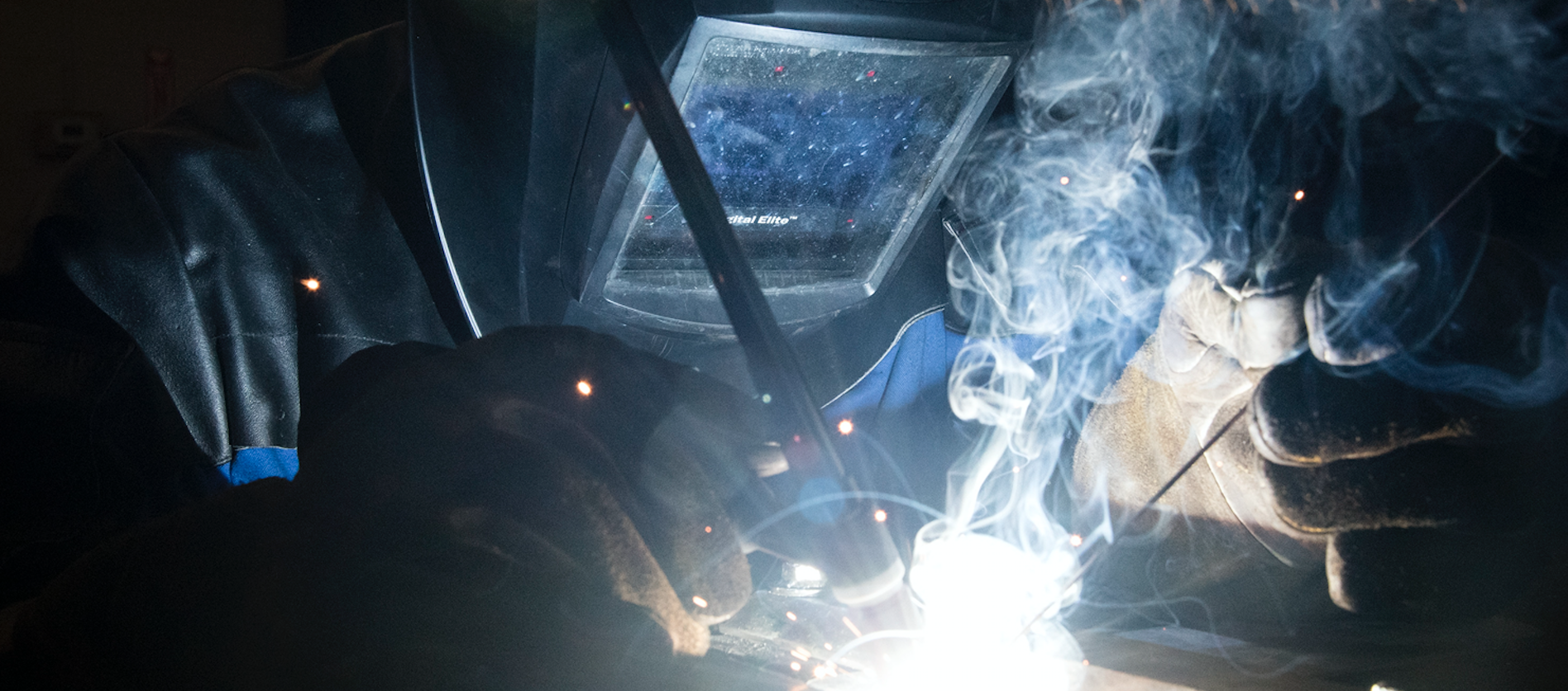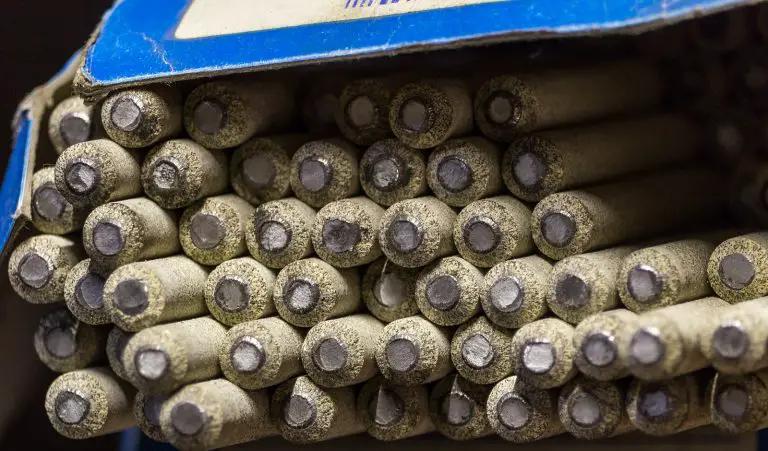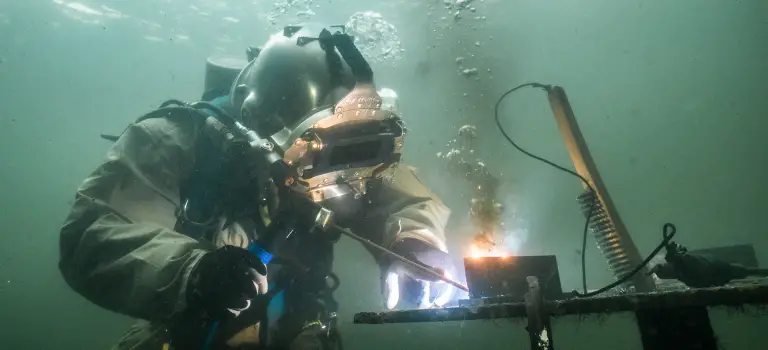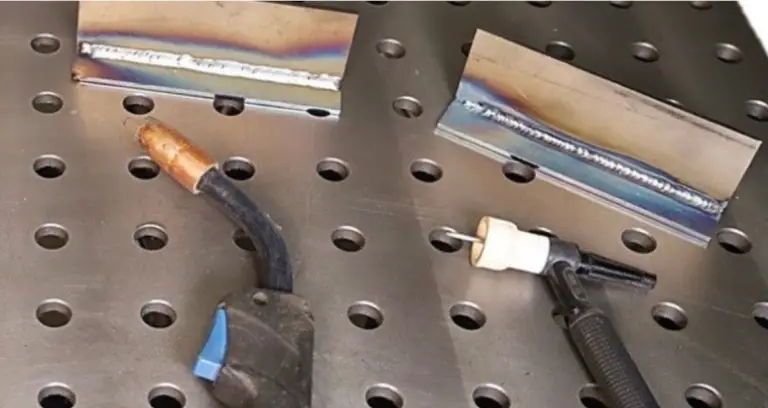TIG Welding Indoors – Is It Safe?
This post contains affiliate links.
TIG Welding Indoors
TIG welding indoors can be a great way to tackle home projects or indoor installations. Many welders want to set up a home shop space, or even a welding setup in their basement. While Stick and MIG welding produce tons of sparks and spatter, TIG does not. This makes it a way better choice for indoor welding – but it is not completely safe.
This article will outline instances where it is safe to TIG indoors, and times where you should definitely avoid it.
First, we will cover the benefits of TIG welding indoors, and then we will dive into the dangers and downsides.
Benefits Of TIG Welding Indoors
Safely TIG Welding At Home
TIG welding at home can be very enjoyable due to it’s cleanly nature. No sparks means much less of a fire hazard for welding in your garage, or an extra work room. It is also easy to set up a work space without a massive machine in your way. Home projects usually involve less amperage, and TIG fits that bill.
Keep in mind that you must clean your garage of any fire hazards if you plan on turning it into a welding area. The smallest of sparks can lead to serious damage. While TIG doesn’t have a violent arc, it heats up steel like crazy. Make sure your work area is clean, and that your project is never resting on flammable material.
Wooden work tables are a no no. Take the time to build or purchase a fab table that is entirely steel or aluminum. All tools used should be for steel work, no plastic is a safe bet.
TIG welding allows for very low amperage and thinner steel applications. This makes it an awesome process for building smaller home projects such as chairs, coffee tables and grills.
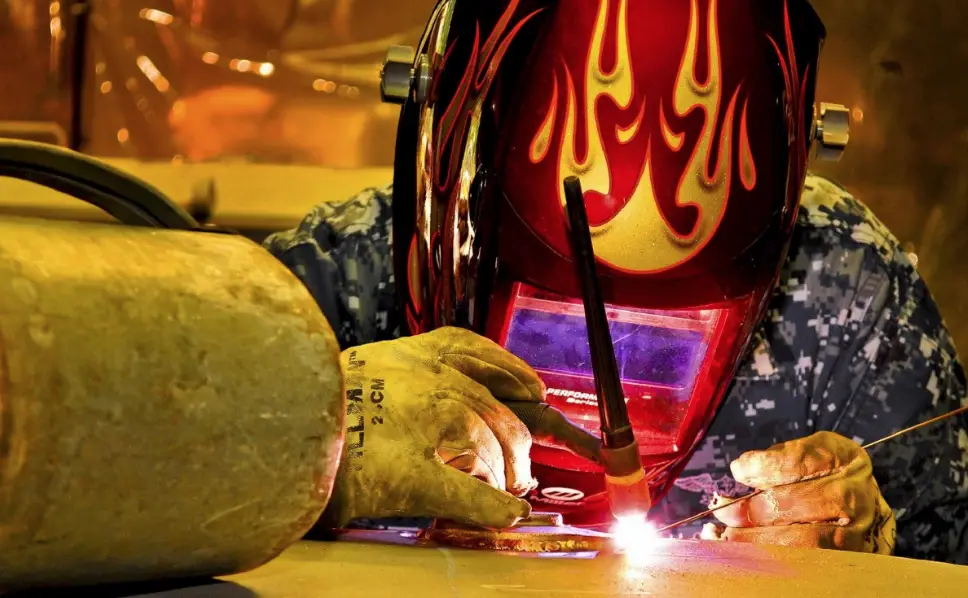
Many TIG machines double as a Stick welder too – If you need to tackle a heavier project, you can invest in some stick leads and electrodes.
Job Site TIG Welding
Many decent to high end housing builds will require a lot of metal work. This could be a handrail leading to the upper level rooms, bathroom valences, and interior trim. Sure, the shop fabricators can make these pieces on their welding tables, but they also must be sent over and installed safely on the job site.
Installing interior metal pieces can be nerve racking, especially when the wood work is already finished and there is high end glass everywhere. Stick and MIG welding are not good options; because they shoot all kinds of sparks within a 10 foot radius of the welder. They also produce way more harmful fumes than a TIG setup does. Contractors will not allow this when there are already finished products throughout the houses interior.
The nice thing about TIG is that if done properly, it won’t shoot any sparks or slag onto the floor or walls. Sure, it will get a bit smoky – but the risk of damaging windows and wood work is very small. Because of this, installation field welders love to have a small TIG machine ready to tackle these inside projects. With a smaller bottle of argon, you can carry the entire setup into the job site without damaging anything.
My coworker and I routinely use this small TIG setup while working indoors on high end housing projects in our mountain town. One employee got chewed out because he was MIG welding, and ruined a $7,000 window at a mountain property. Sure, the massive insurance policy covered it – but it caused some real drama.
Downsides Of TIG Welding Indoors
Argon Dangers for TIG
Argon is always heavier than air – and most TIG processes will use argon exclusively .This “heavier than air” dilemma means that if exposed to large amounts of it, your lungs can fill up and you will need to be turned upside down in an emergency room to clear the gas. This sounds extreme, but it is the best way to save your life.
This is especially important to know if you plan on welding in your basement or on a lower level of a job site. A torch malfunction or a cylinder leak can lead to dire consequences. If you must weld in a basement setting, make sure that your gas cylinder is in perfect shape and that your hoses are sealed tight. Also, make sure to turn your post flow down to a reasonable setting.
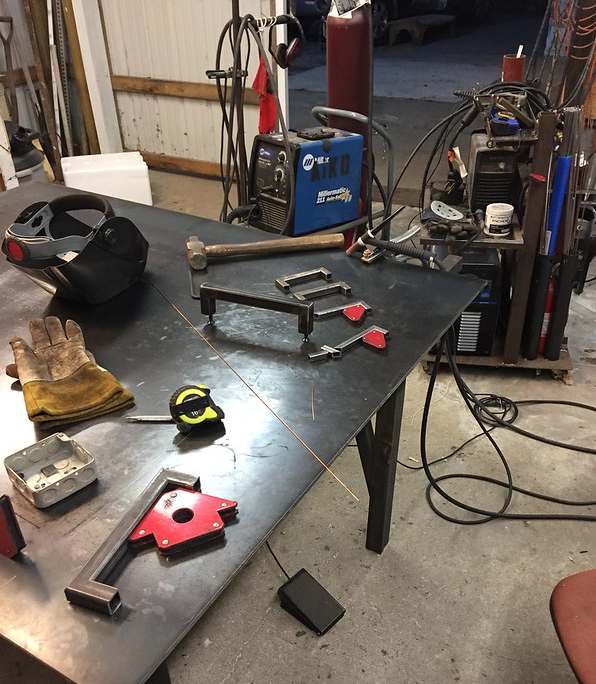
My old welding instructor was on a job site once as a newbie welder. He was doing a bunch of TIG welds in a basement all day long. He didn’t know the argon cylinder had a major leak, and by the afternoon he felt extremely ill. When he arrived at the hospital, they realized his lungs had huge levels of argon inside of them, and they had to drain it over several hours. He could have easily suffocated if he waited any longer…
Though welding can be fun, there is no reason to put your health at risk to make an extra dollar. Always check your equipment and follow all safety procedures with care.
TIG Fumes/Smoke
Though TIG welding produces less smoke and fumes than other processes, it is still bad for your lungs and immune system, especially indoors. No matter where you’re TIG welding, always make sure to have proper ventilation.
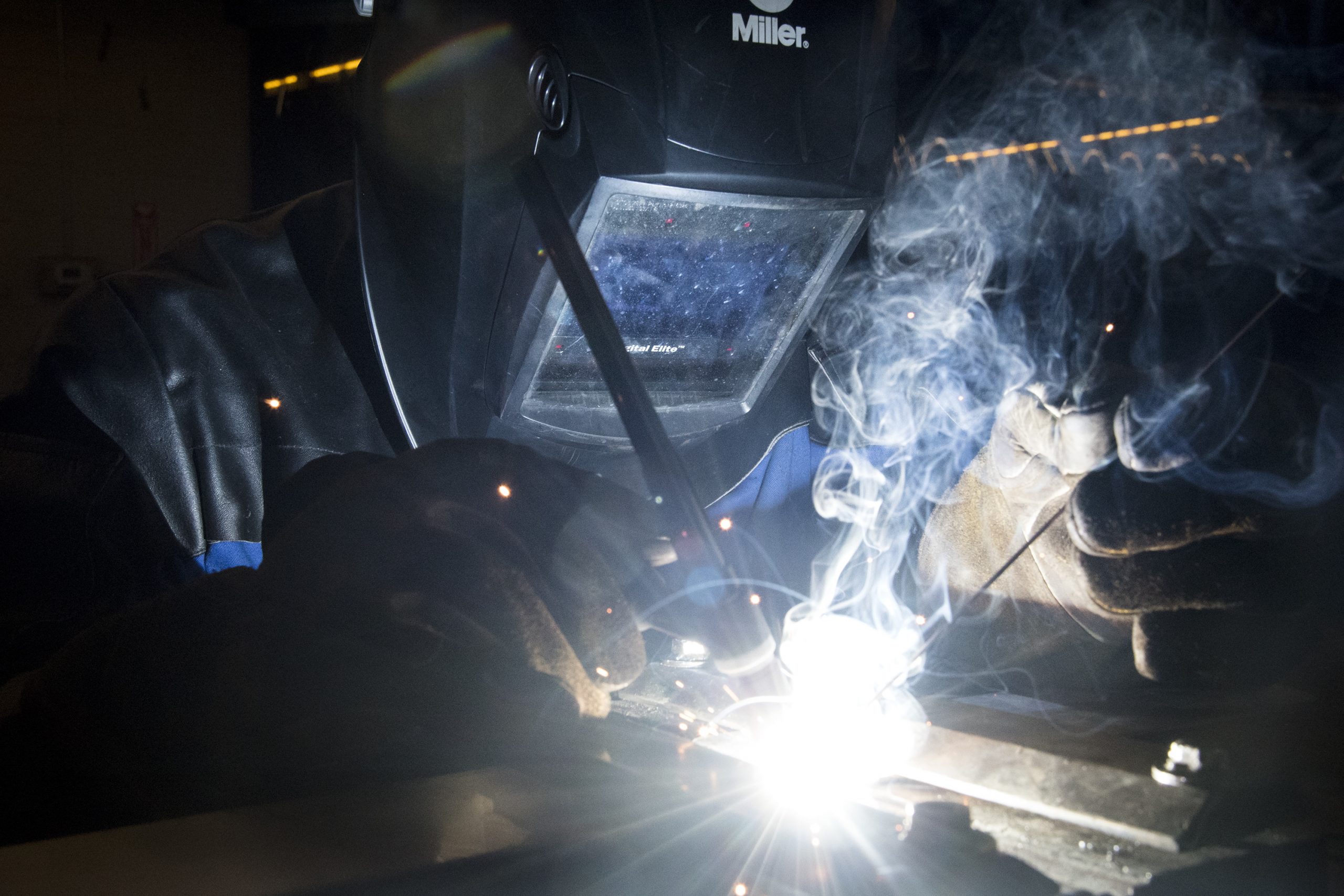
This could just mean opening your garage door or a few windows in your work shop. If you are doing high amperage TIG for long periods, investing in an industrial fan or a fume extractor is the safest bet.
We always recommend wearing some sort of respirator while working with metal. This is even more important in indoor situations. Honeywell and Miller make many affordable options that have interchangeable filters meant to be replaced often. The downsides of these is that they are uncomfortable and hard to get used to.
Keep in mind that no respirator will protect you from argon poisoning. They are meant to only filter fumes and particle debris. Argon is the biggest danger when TIG welding indoors, although poisoning cases are quite rare.
The ill effects of welding aren’t seen in health tests for many years, but starting to use PPE now is a great bet.
Wrap up
While it is not necessarily dangerous to TIG weld indoors, precautions must be taken. Our choice would be that you didn’t turn your basement into a welding workshop due to the argon/fume dangers listed above.
We have always preferred a garage or separate structure for building our personal metal projects. It is also nice to have a space that is dedicated to welding projects; it can be your welding cave! However, we understand that not everyone will have the luxury to dedicate space to their own projects.

